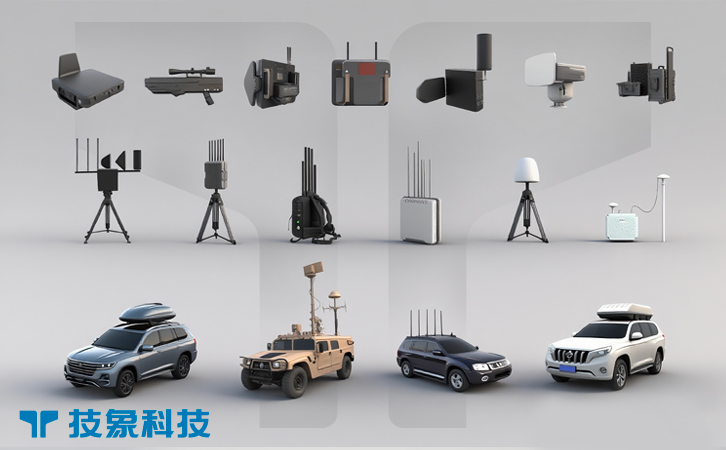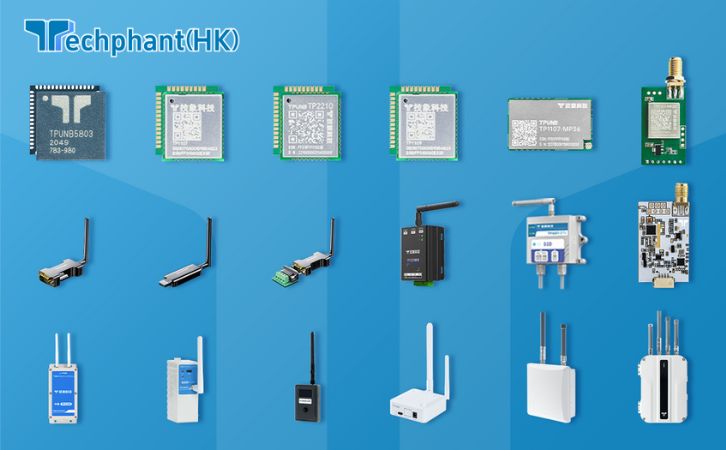Drone detection is a critical component of anti-UAV systems, enabling the identification and tracking of unmanned aerial vehicles (UAVs) to mitigate threats such as unauthorized surveillance, smuggling, or attacks. Detecting drones often relies on intercepting and analyzing the radiofrequency (RF) signals used for their communication, navigation, and control, as well as leveraging other frequency-based technologies like radar. These frequencies vary depending on the drone’s type, purpose, and operational environment, making their understanding essential for effective detection. This article explores the frequency bands used in drone detection, detailing their roles, challenges, and technological advancements in the context of modern anti-UAV systems.
I. Radiofrequency Bands for Drone Communication
Most drones rely on RF signals to communicate with their operators, transmit video feeds, or receive navigation data, making RF detection a cornerstone of anti-UAV systems. Common frequency bands for drone communication include the Industrial, Scientific, and Medical (ISM) bands, particularly 2.4 GHz and 5.8 GHz, which are widely used by consumer and commercial drones due to their availability and range. For example, popular drones like the DJI Mavic series use 2.4 GHz for control signals and 5.8 GHz for high-definition video transmission, enabling real-time streaming over distances up to 7 kilometers.
Military and industrial drones may operate on less common bands, such as 900 MHz for longer-range, low-bandwidth communication, or licensed bands like 1.9 GHz for secure operations. RF detection systems, such as those developed by Dedrone or DroneShield, scan these bands to intercept signals, identifying a drone’s presence, location, and sometimes its model by analyzing signal characteristics like modulation or protocol (e.g., Wi-Fi or proprietary protocols). However, detecting these signals in urban environments is challenging due to interference from Wi-Fi networks, Bluetooth devices, and other RF sources, requiring advanced filtering algorithms to isolate drone-specific signals. Understanding these frequency bands is crucial for designing detection systems that can effectively monitor and differentiate drone communications from background noise.
II. Radar Frequencies for Drone Detection
Radar systems are a primary tool for detecting drones, especially those operating autonomously without RF communication. Radars use electromagnetic waves in various frequency bands to detect objects by measuring reflected signals. For drone detection, high-frequency bands like X-band (8-12 GHz) and Ku-band (12-18 GHz) are commonly used due to their ability to detect small, low-flying objects with high resolution. For instance, the Giraffe 4A radar, used by military forces, operates in the X-band to track drones with radar cross-sections as small as 0.01 square meters, effective at ranges up to 20 kilometers.
Lower-frequency bands, such as L-band (1-2 GHz), are used for longer-range detection in open environments but are less effective for small drones due to lower resolution. Modern phased-array radars, which dynamically steer beams, enhance detection accuracy by focusing on specific sectors of airspace. These systems face challenges in cluttered environments, where reflections from buildings or trees can obscure drone signals, necessitating AI-driven signal processing to filter noise. Radar frequencies are selected based on the operational context—high-frequency bands for urban or high-precision scenarios and lower bands for wide-area coverage—ensuring robust detection across diverse settings.
III. Challenges in Frequency-Based Detection
Detecting drones using RF and radar frequencies presents several challenges that impact system effectiveness. In RF detection, the crowded spectrum in urban areas, filled with Wi-Fi, cellular, and other signals, creates significant interference, making it difficult to isolate drone-specific frequencies. Autonomous drones, which rely on onboard AI rather than RF communication, are particularly challenging, as they emit minimal or no detectable signals. For example, a drone using pre-programmed flight paths may evade RF sensors, requiring complementary detection methods like radar or acoustic sensors.
Radar-based detection faces its own hurdles. Small drones with low radar cross-sections are hard to distinguish from birds or environmental clutter, leading to false positives. High-frequency radars, while precise, have limited range and are affected by weather conditions like heavy rain or fog, which attenuate signals. Additionally, the proliferation of drones operating on non-standard or encrypted frequencies complicates detection, as standard RF scanners may fail to intercept proprietary protocols. Overcoming these challenges requires advanced technologies, such as machine learning to analyze signal patterns or multi-sensor fusion to combine RF, radar, and EO/IR data, ensuring reliable detection in complex environments.
IV. Advancements in Frequency-Based Detection Technologies
Recent advancements in frequency-based detection technologies are enhancing the capabilities of anti-UAV systems. AI and machine learning are revolutionizing RF detection by enabling real-time analysis of signal patterns to identify drone-specific signatures, even in noisy environments. For instance, systems like Dedrone’s DroneTracker use AI to differentiate between drone control signals and other RF sources, improving accuracy. Software-defined radios (SDRs) are another innovation, allowing detectors to scan a wide range of frequencies dynamically, adapting to new or encrypted drone protocols without hardware upgrades.
In radar technology, advancements like frequency-modulated continuous wave (FMCW) radars improve resolution for detecting small drones at short ranges, ideal for urban deployments. Integration with 5G networks enables faster data processing and coordination across multiple detection units, creating networked defense systems for large areas like airports. Emerging technologies, such as terahertz (THz) frequency radars (300 GHz and above), promise ultra-high resolution for detecting micro-drones, though they are still in development due to high costs and atmospheric absorption challenges. These advancements, combined with multi-sensor fusion, are making frequency-based detection more robust, scalable, and adaptable to evolving drone threats.
Conclusion
Frequency-based detection is a cornerstone of anti-UAV systems, leveraging RF and radar technologies to identify and track drones in diverse environments. The 2.4 GHz and 5.8 GHz ISM bands dominate drone communication, while X-band and Ku-band radars provide high-resolution detection. Despite challenges like signal interference and autonomous drones, advancements in AI, SDRs, and high-frequency radars are enhancing detection capabilities. As drone technology evolves, frequency-based detection systems will continue to adapt, integrating with broader defense networks to ensure effective airspace security. These innovations underscore the critical role of frequency management in countering the growing complexity of UAV threats.



